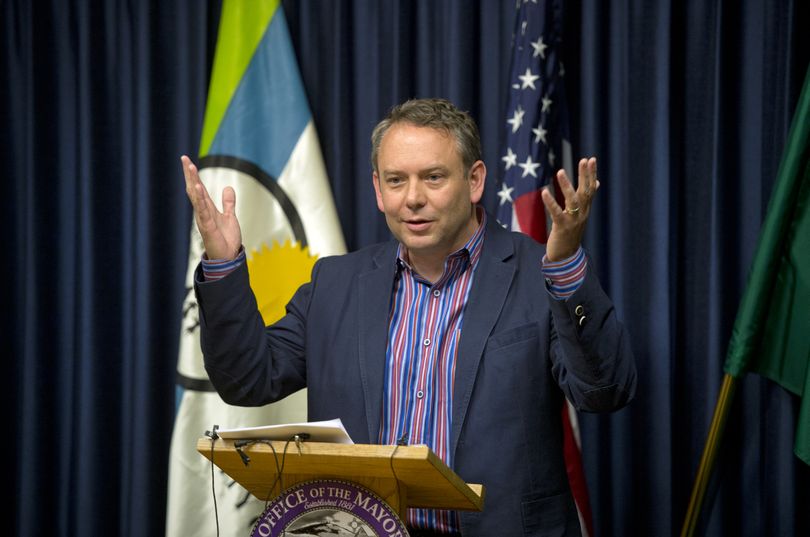Condon calls for subway to Chunnel under river (not really)

Spokane Mayor David Condon used to walk downtown from his South Hill home. It was an occasional mode of commuting for he and his wife, but the demands of a mayor are many, so now, most days, he drives.
Regardless, he said he supports all ways of commuting – whether it be biking, walking or mass transit – and his administration gets a lot of credit for rethinking how Spokane’s streets are made, and that includes allowing street engineers to consider all those modes.
“Public transit is critical for city,” he said. “No doubt. … The Central City Line connects some really vital parts of our community. It’s well-placed.”
The central line is one of the main components of the Spokane Transit Authority's "Moving Forward" plan, which also includes more transit centers and high-speed corridors. Condon pointed out that he wasn’t privy to the particulars of any discussions about a potential ballot measure to enact STA's plan, including potential tax increases, but the idea struck him as sound.
“I think the issue of how we do it is a valiant discussion,” he said.
Still, Condon obviously enjoyed talking about the merits of transit, and waded into the merits of pulse and grid systems, and how they can work together.
In short, a grid system is exactly what it sounds like: carve your city up into squares and have buses run along all the lines. A pulse system is a timed transit system that aims to have all buses meet at the same time, allowing for transfers.
The two can work together, but pulse systems work best when organized around a main trunk line, like light rail or subway.
Which gets us back to Condon. He’s lived in Boston, which has a trunk line subway with a bus-based pulse system around it. The two work well together, he said, but you have to know how to use it.
“If you use the T,” he said, referring to Boston’s subway, “it takes you an hour and half to get from Harvard to Boston College. If you take the bus system, it’s a mile and a half, you go straight across the Charles, it takes you five to seven minutes.”
He was making the point that transit system’s aren’t necessarily complicated to use, but are based on complicated systems. And, he noted, the Central City Line could be Spokane’s trunk.
Then he pointed out the obvious.
“Of course, we don’t have the subway system,” he said. So I asked him if he was calling for a subway in Spokane, because wouldn’t that be great?
“We are going to Chunnel under the Spokane River,” he intoned, referring to the rail tunnel under the English Channel that connects the United Kingdom and France. “We are going to once and for all connect the north to the south.”
Realizing he may have to build support for such an audacious plan, he added one last caveat.
“And we’re going to have kayak park on top of it. It’s a win-win-win,” he said, jokingly of course.
